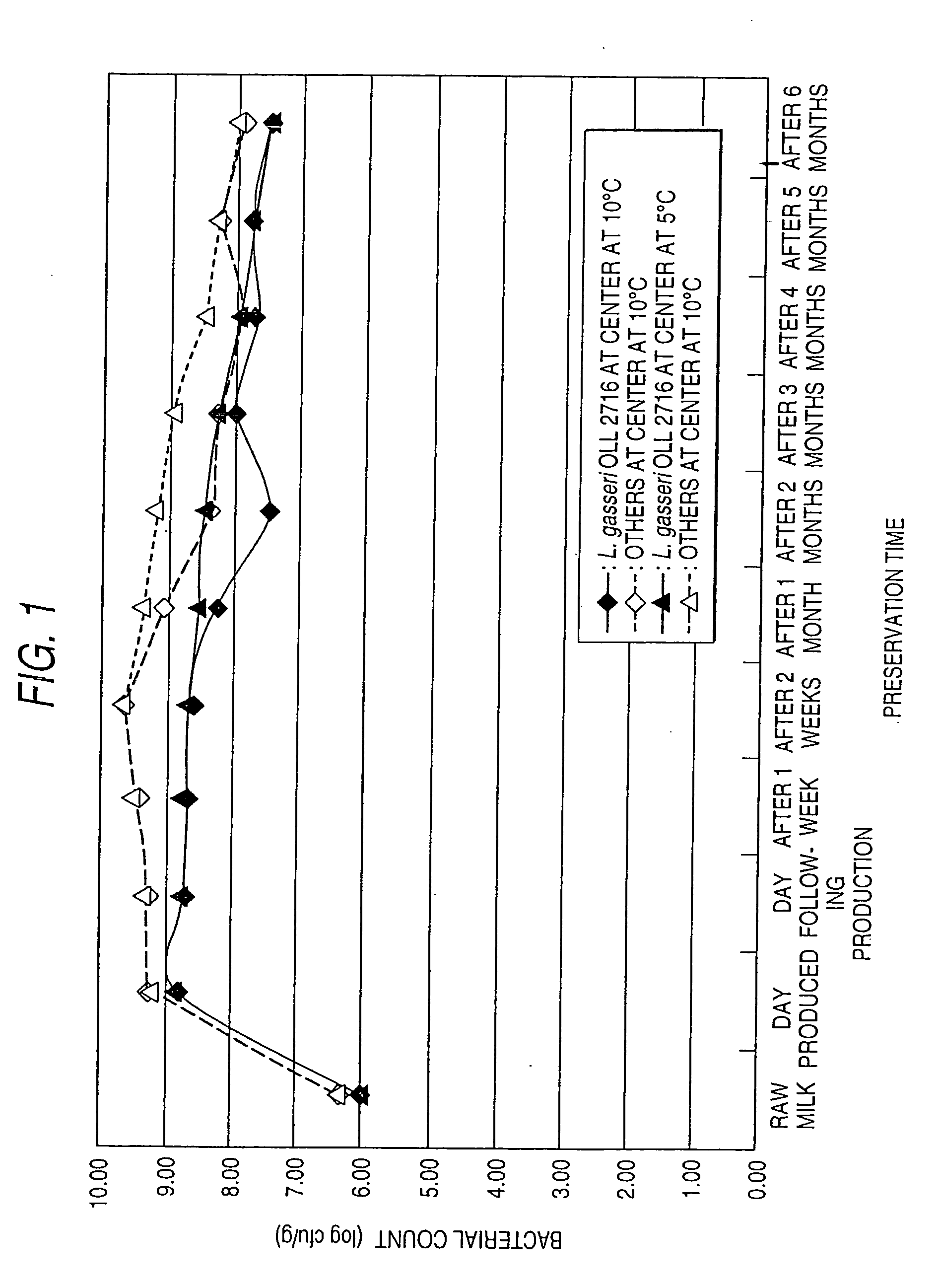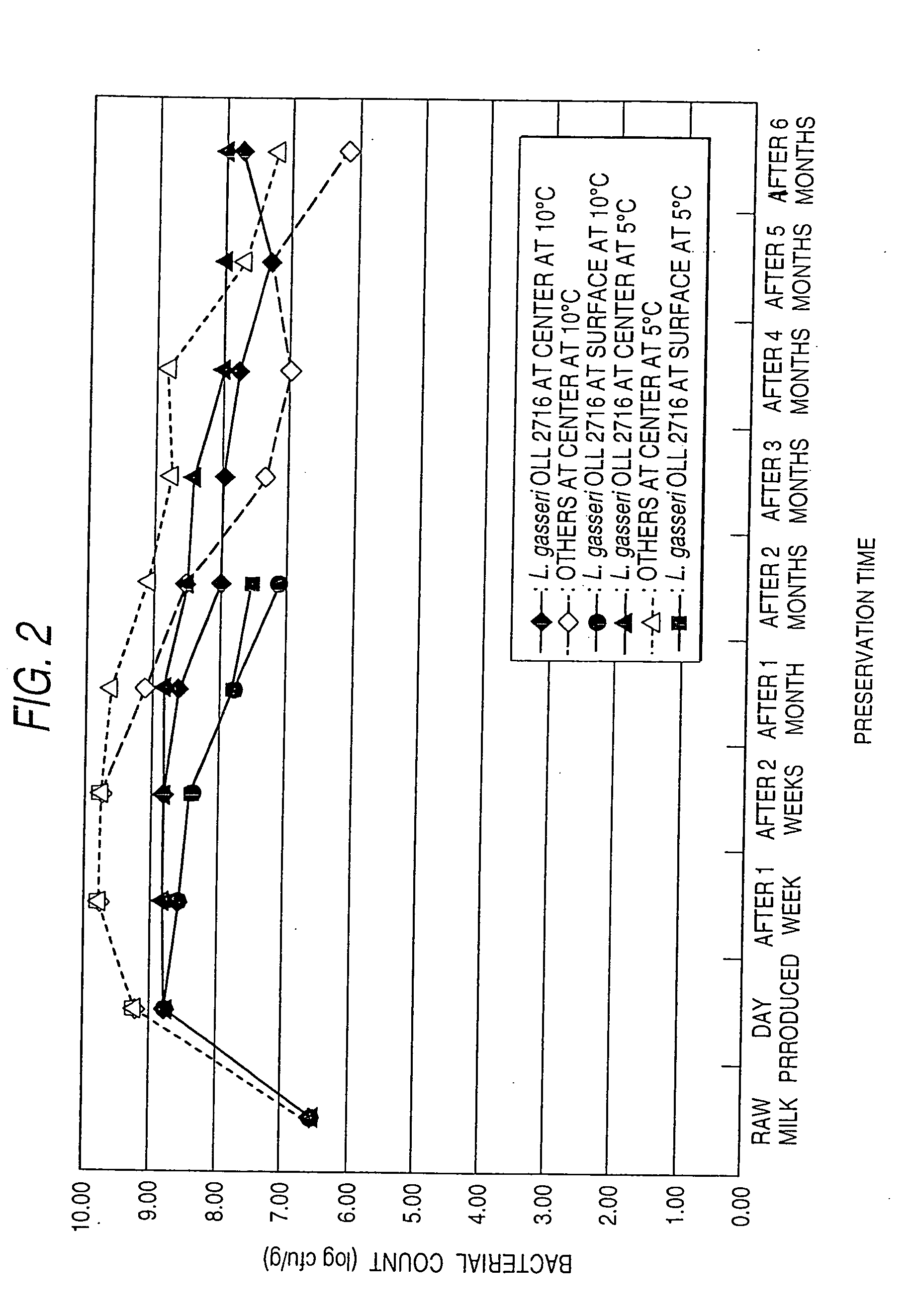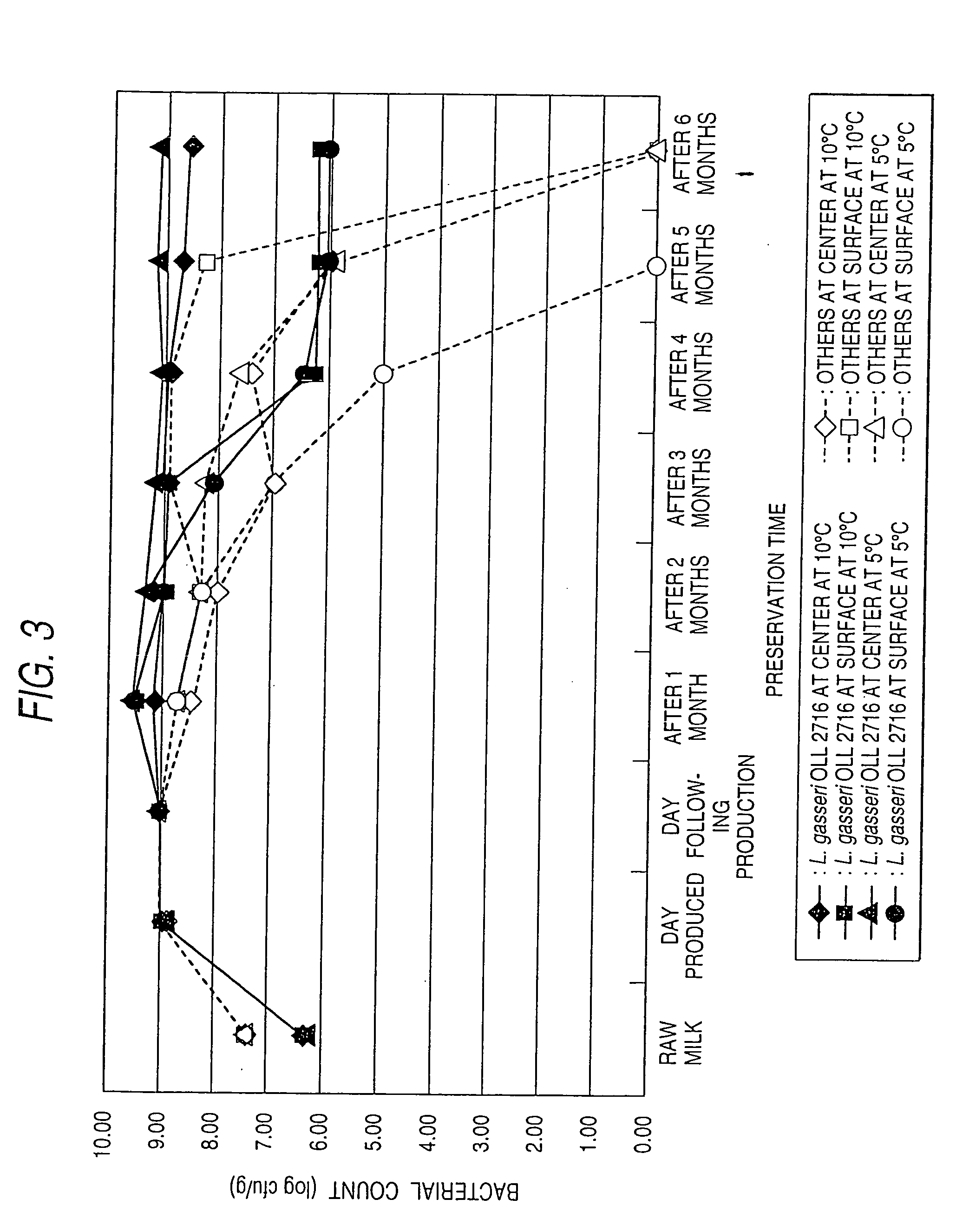Cheese capable of disinfecting helicobacter pylori
a technology of helicobacter pylori and cheese, which is applied in the field of natural cheese, can solve the problems of not being suitable for lon, fermented milk has a relatively short quality preservation period of about 2 weeks, etc., and achieves high disinfection potency and high bacterial coun
- Summary
- Abstract
- Description
- Claims
- Application Information
AI Technical Summary
Benefits of technology
Problems solved by technology
Method used
Image
Examples
example 1
Process of Producing Cheddar L. gasseri-Containing Cheese:
[0051]L. gasseri OLL 2716 (FERM BP-6999) and a marketed lactic acid bacteria mixture for cheese (O-180, available from Hansen) were each inoculated at a ratio of 1% into a 10% skim milk medium. Then L. gasseri was cultured at 37° C. for 17 hours while O-180 was cultured at 25° C. for 17 hours, thereby giving bulk starters. Subsequently, 100 kg of milk, which had been sterilized at 73° C. for 15 seconds, was adjusted to 30° C. and inoculated with 1% of each the L. gasseri and the O-180 bulk starter as described above. Then 10 kg of cheddar cheese of about 30 cm in length and width and about 10 cm in height was produced by a conventional method. This cheddar cheese was vacuum-packed in an Eval coat nylon polyethylene film (manufactured by Mitsubishi Plastics, Inc.) and preserved at 5° C. and 10° C. The L. gasseri count and the count of other bacteria in each step and the bacterial count for 6 months from the day after product...
example 2
Process for Producing L. gasseri-Containing Gouda Cheese:
[0059]L. gasseri OLL 2716 and a marketed lactic acid bacteria mixture for cheese (CHN-01, available from Hansen) were each inoculated at a ratio of 1% into a 10% skim milk medium. Then L. gasseri was cultured at 37° C. while CHN-01 was cultured at 25° C. each for 17 hours, thereby giving bulk starters. Subsequently, 100 kg of partially skim milk (SNF 8.5%, fat 3%), which had been sterilized at 73° C. for 15 seconds, was adjusted to 32° C. and inoculated with 1% of each of the L. gasseri bulk starter and the CHN-01 bulk starter. Then 10 kg of gouda cheese of about 30 cm in length and width and about 10 cm in height was produced by a conventional method. Table 4 shows bacterial counts in respective steps. The obtained gouda cheese contained 43% moisture, 24% fat, 25% protein and 1.7% sodium chloride. This gouda cheese was vacuum-packed in an Eval coat nylon polyethylene film and preserved at 5° C. and 10° C. The L. gasseri cou...
example 3
Process for Producing L. gasseri-Enriched Gouda Cheese (2)
[0062]L. gasseri OLL 2716 was inoculated at a ratio of 1% into a 10% skim milk medium containing 0.1% yeast extract (manufactured by Difco), while a marketed lactic acid bacteria for cheese Lactococcus lactis subsp. lactis (isolated from CHN-01, available from Hansen) was inoculated at a ratio of 1% into a 10% skim milk medium. Then L. gasseri was cultured at 37° C. for 24 hours and L. lactis was cultured at 25° C. for 17 hours, thereby giving bulk starters. Subsequently, 20 kg of partially skim milk (SNF 8.5%, fat 3%), which had been sterilized at 73° C. for 15 seconds, was adjusted to 32° C. and inoculated with 1% of each of the L. gasseri bulk starter and the L. lactis bulk starter. Next, 20 g of yeast extract was further added. Then cheese curd was produced by a conventional method, pressed and incubated in a mold in a room at a room temperature of 25° C. for 24 hours. After taking out from the mold, the cheese was imme...
PUM
| Property | Measurement | Unit |
|---|---|---|
| temperature | aaaaa | aaaaa |
| pH | aaaaa | aaaaa |
| pH | aaaaa | aaaaa |
Abstract
Description
Claims
Application Information
 Login to View More
Login to View More - R&D
- Intellectual Property
- Life Sciences
- Materials
- Tech Scout
- Unparalleled Data Quality
- Higher Quality Content
- 60% Fewer Hallucinations
Browse by: Latest US Patents, China's latest patents, Technical Efficacy Thesaurus, Application Domain, Technology Topic, Popular Technical Reports.
© 2025 PatSnap. All rights reserved.Legal|Privacy policy|Modern Slavery Act Transparency Statement|Sitemap|About US| Contact US: help@patsnap.com



